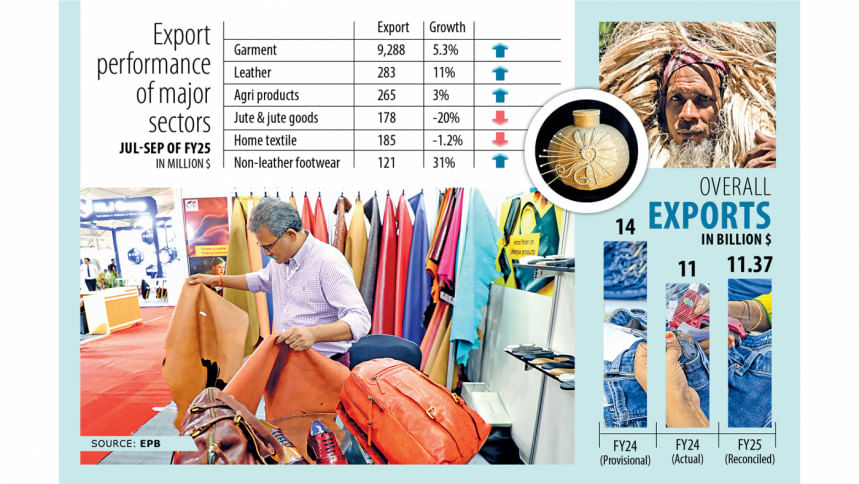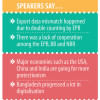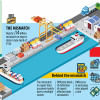Exports grow 5% in Jul-Sep, EPB admits $3b mismatch

The Export Promotion Bureau (EPB) yesterday unveiled the export data for the July-September period of fiscal year 2024-25 and officially acknowledged that there was a $3.16 billion export data mismatch in the same quarter of the previous fiscal year.
The bureau mentioned the National Board of Revenue's (NBR) role in the data mismatch, an awkward revelation which came to light in July this year and led to a three-month suspension of regular export data publication.
At a press conference, EPB officials announced the end of the data publication pause and said there would be no data gap between the revenue board and EPB in the future.
The bureau said that Bangladesh's exports grew 5 percent year-on-year to $11.37 billion in the July-September quarter of fiscal year 2024-25, driven by increased apparel shipments.
In September alone, exporters earned $3.5 billion, a 6.78 percent increase compared to the same month of the previous year, according to the corrected export figures for September 2023.
Regarding the data mistake, the EPB said the export earnings for July to September in FY2023-24 were reported at $13.98 billion, but it was actually $10.82 billion.
"We collect export data from the National Board of Revenue (NBR)," said Md Anwar Hossain, vice-chairman of the EPB. "As NBR made mistakes in data input, EPB's output was also incorrect."
He said the revenue board counts exports after duty assessment, while the Bangladesh Bank counts exports when earnings are realised.
In July, the Bangladesh Bank (BB) published data showing that actual shipments for the July-April period of the 2023-24 fiscal year were nearly $14 billion lower than the export figures initially reported by the EPB.
The discrepancy between export figures has persisted for at least 12 years, with the gap surpassing $12 billion in the 2022-23 fiscal year.
To estimate and correct the data mismatch in the July-September period of FY24, Hossain said the EPB held a series of meetings with the NBR and the central bank. They decided to consider export earnings only after shipment.
He added that they were planning to release live data connected to the NBR database but needed more time to do so.
Multiple entries the main culprit
Referring to the findings of the Bangladesh Bank inquiry into the data mismatch, Hossain said multiple entries of shipments by customs officials at the NBR were the main reason for the data discrepancy.
In the case of garment orders under the cutting, making and trimming (CMT) process, the EPB calculated the prices of fabrics and all accessories, instead of only the making charge. This was another contributing factor to inflated data.
He also said that sample items shipped abroad for buyers were counted as exports, assigning value to items with no actual export value.
Besides, sales by companies within Export Processing Zones (EPZs) were counted twice: once during delivery from the EPZs to local firms and again during shipment from the ports by foreign buyers.
Actual proceeds usually fall below the initial value mentioned in letters of credit (LC), a discrepancy that the EPB did not adjust, the Bangladesh Bank said in its probe report.
Losses stemming from stock-lot sales, discounts and commissions were also not adjusted by the EPB, according to the central bank.
The BB arrived at these findings through its inquiry into the reasons behind the increase in net trade credit, the gap between reported shipment values and actual money flow into Bangladesh.
Anwar-ul Alam Chowdhury Parvez, president of the Bangladesh Chamber of Industries (BCI), said the inflated export data from the EPB gave a negative impression to the general public, hinting that garment exporters were laundering money.
"But, this was due to incorrect data input by government entities."
The erroneous statistics and its implications not only humiliated exporters but also provided misleading information to policymakers, causing them to believe that the readymade garments sector had built up capacity for incentive phase-out.
According to Parvez, the EPB was repeatedly warned about the inflated export data by apparel exporters, but to no avail.

 For all latest news, follow The Daily Star's Google News channel.
For all latest news, follow The Daily Star's Google News channel. 







Comments